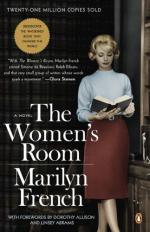|
This section contains 338 words (approx. 2 pages at 300 words per page) |

|
The Women's Room powerfully communicates the experience in society of women who have come of age since the Second World War. The central character went hopefully to college in the late 1940s, believing in her own intelligence, potential, and opportunity. In the 1950s, she and her friends settled into the suburban life of domesticity and motherhood that became a national ideal, and avoided speaking about the subtle undercurrents of dissatisfaction that Betty Friedan, in The Feminine Mystique, would characterize as "the problem that has no name." Buffeted in the 1960s by pressure and change — nervous breakdown, divorce, alcoholism, shifting social roles, sexual freedom — some emerged with the energy to seek new goals, new training, and independent professional existences, but discovered that real independence could be gained only at the cost of loneliness. The next generation of women — those who came of age in...
|
This section contains 338 words (approx. 2 pages at 300 words per page) |

|




